20 years after the museum opened, Yvon Lambert is reactivating his very special relationship with the works in his collection by choosing thirteen artists who have marked his history. And it proves once again that there remains a precursor, connected to the present, such as this young collector of 20 years who ran to discover the artists in their workshops.
Discover in preview this exhibition which you can visit at the Lambert Collection as soon as it reopens.
“The Nomads photographic series was my first encounter with Andres’ work. It was at the end of the 80’s, in a New York gallery, the Stux Gallery.
Immediately, I told the friend with whom I was traveling that I wanted to expose this artist of whom I knew nothing yet. There had indeed been all the scandals that announced the wave of politically correct, with the wrath of the National Endowment for the Arts, furious to know that aid for creation could be used to defend works that the members of the commission considered obscene.
But I admit that I discovered the work of Serrano, without being aware of the problems that the Piss Christ may have caused … simply because, despite my ignorance about this artist, I mainly mocked the silly reactions of these American ultra-conservatives. I also thought at the time that this trend which advocates the idea of the correct as a rule of ethics would not cross the borders of the United States, while several examples prove that we are no longer immune to France such stupid considerations.”

Considered a subject of controversy, Andres Serrano is a special case in the world of international photography. If his work disturbs by its force of representation of our current world, it is however intimately associated with the history of art, that of Baroque painting in particular. It is through this double prism that it is fascinating to decipher this work, through the disturbing face of an America which is revealed at the dawn of the third millennium to the rest of the world, and with the great masters of the past. of which Serrano retains only the darkest part. We think of Titian and Delacroix, Tintoretto, Vélasquez and Goya, El Greco, Zurbaran, Géricault or Courbet…
Andres Serrano, Bodily Fluids : Semen & Blood II, 1990
© Collection Privée / Dépôt à la Collection Lambert, Avignon

“If I have never made personal exhibitions of Donald Judd, his works have nevertheless been presented in my gallery and I have a very beautiful set made up of drawings and sculptures. A few months before his death, I met him in New York, a stone’s throw from his Spring Street studio. We chatted for several hours in a café in Soho. “Why have you never exposed me?” he asked me, smiling? We laughed together, me not knowing what to say except “It never happened”.

(…) We had our cafes for our meetings, our places to walk around, like this bookstore that no longer exists today, Jaap Reitman, where we consulted and commented on new releases of art books. Regularly, during these quick stays, I bought him pieces that he showed me in his workshop, like this series of drawings that he was preparing and that I asked him to finish before my return to Paris.

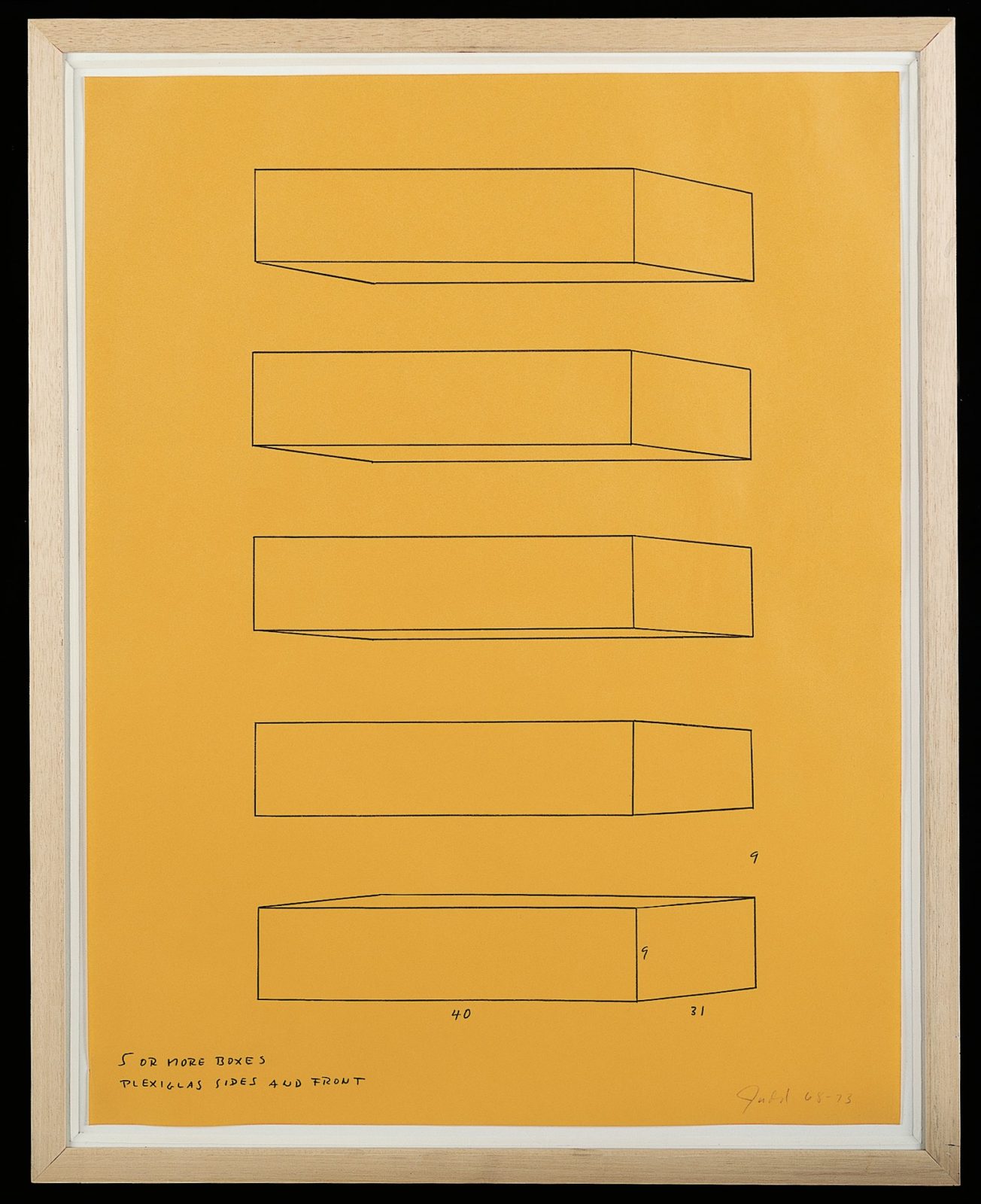
After attending the Art Student League in New York where he learned painting and then studied philosophy at Columbia University, Donald Judd began a work of redefining art through a double practice of artist and critic. As early as 1965, he published Specific Objects, the founding text that laid the foundations for minimal art, just as Sol LeWitt’s famous Paragraphs on Conceptual Art nourished reflections on conceptual art.

Generally made up of one or more repeated modules aligned vertically or horizontally, sometimes produced by specialized companies, the works of Donald Judd aim to reveal the space in which they are integrated to invite the visitor to no longer passively contemplate but to experience physically and mentally the works and the spaces they occupy.
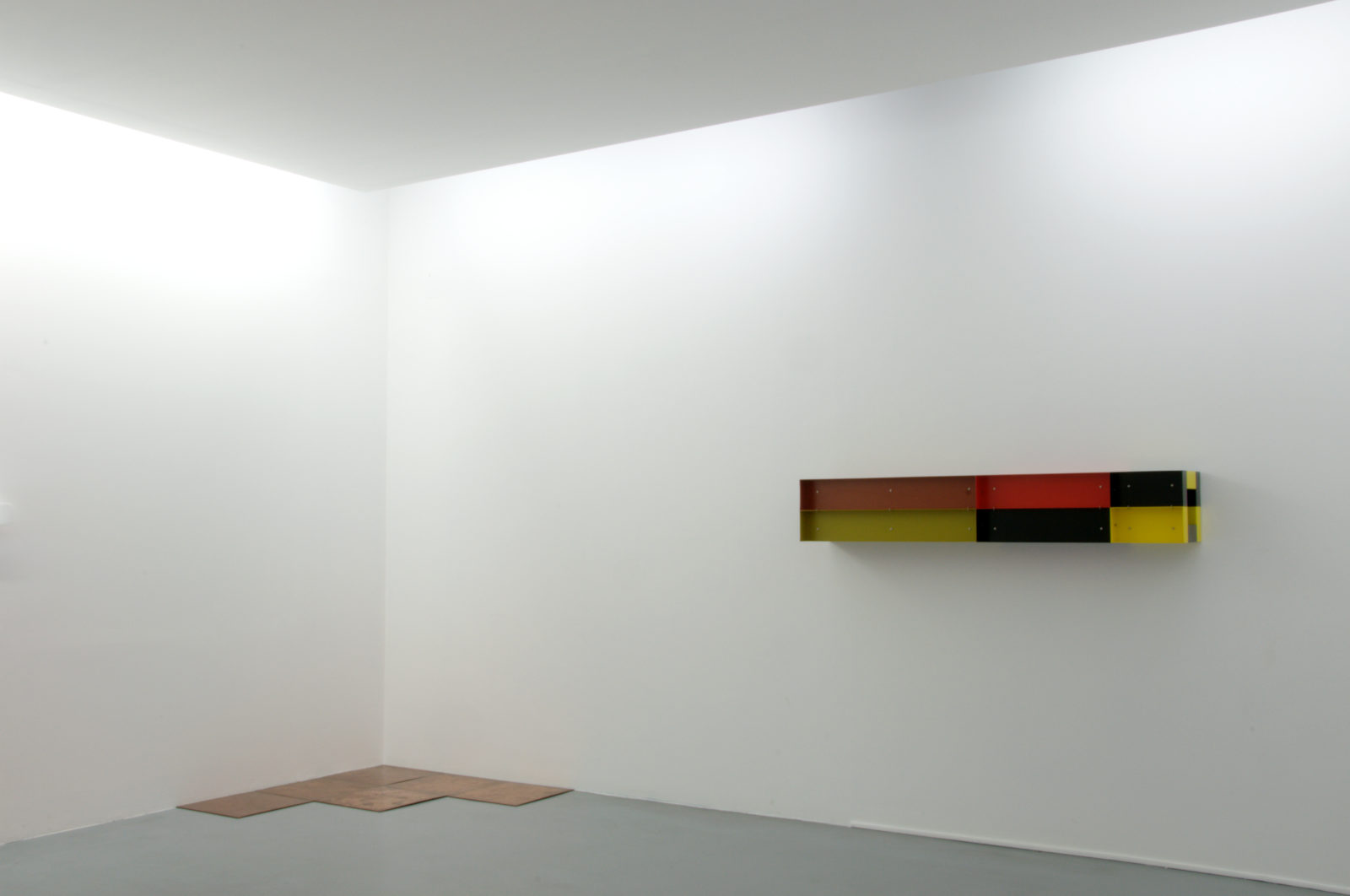
Donald Judd, Untitled, 1984
© Donation Yvon Lambert à l’État français / Centre national des arts plastiques / Dépôt à la Collection Lambert, Avignon
Donald Judd, Untitled, 1968
© Donation Yvon Lambert à l’État français / Centre national des arts plastiques / Dépôt à la Collection Lambert, Avignon
Donald Judd, 5 or more boxes, 1968 – 1973
© Donation Yvon Lambert à l’État français / Centre national des arts plastiques / Dépôt à la Collection Lambert, Avignon
Donald Judd, Untitled, 1989
© Donation Yvon Lambert à l’État français / Centre national des arts plastiques / Dépôt à la Collection Lambert, Avignon
Vue d’exposition “Un art de son temps” à la Collection Lambert, 2019

Cy Twombly
Yvon Lambert says: “Cy Twombly has the same passion as me for mythology. We have the same way of approaching these stories where the fate of humans is subject only to the whims of the gods and goddesses, not as scholars but with an instinctive connection between all the eras of art history. (…) By dint of having seen Cy work in his studio, I admit being one of the privileged people who knows for sure how to transcribe these writings which hide in his works. Between the graffiti that Brassaï was photographing and the pornographic inscriptions on the toilets in public gardens, these sentences always fill my imagination. Sometimes a stain replaces a word, like the one that smears the last part [of Pan’s polyptych].”
Some colors may be altered on your screens.

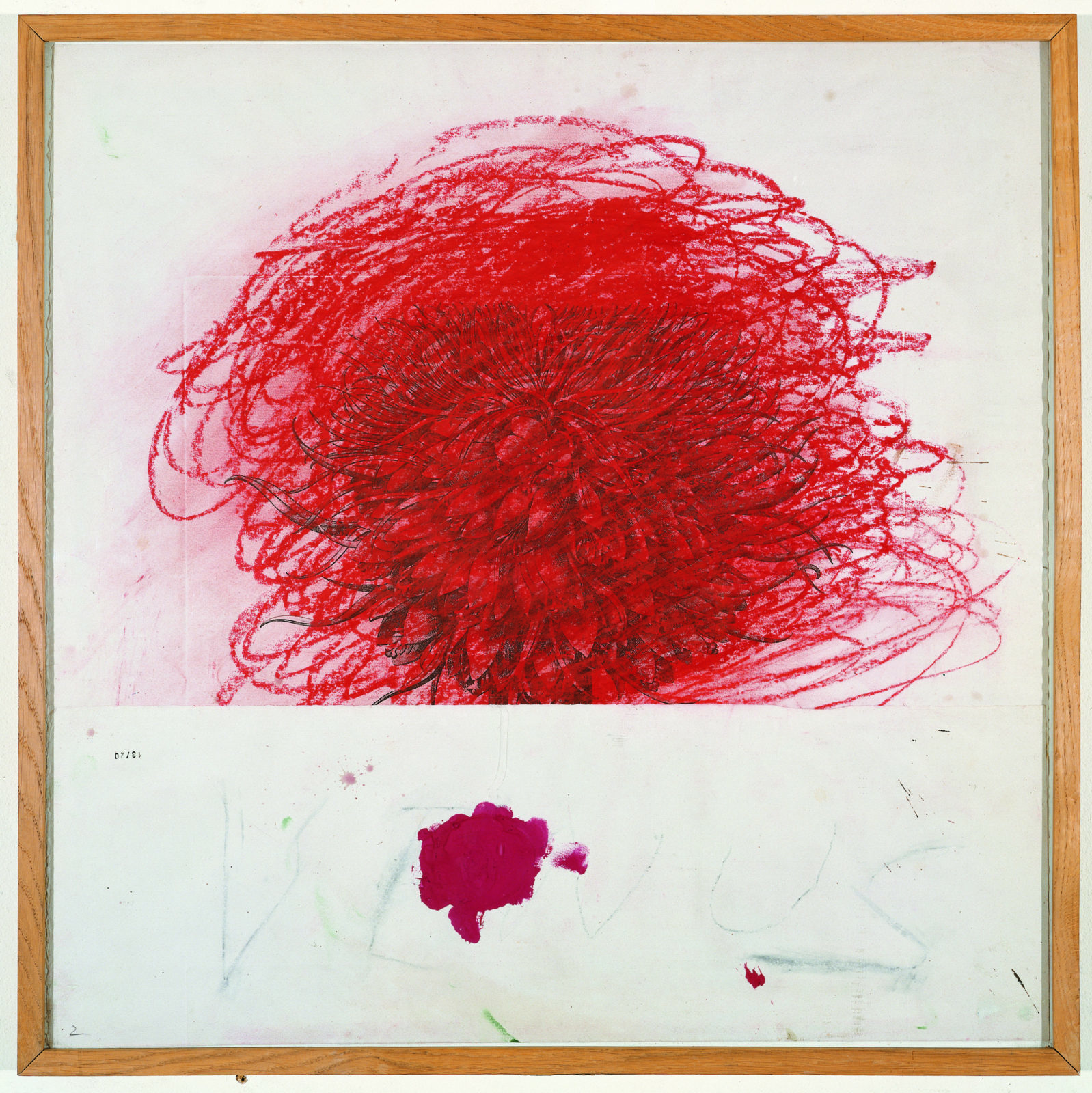

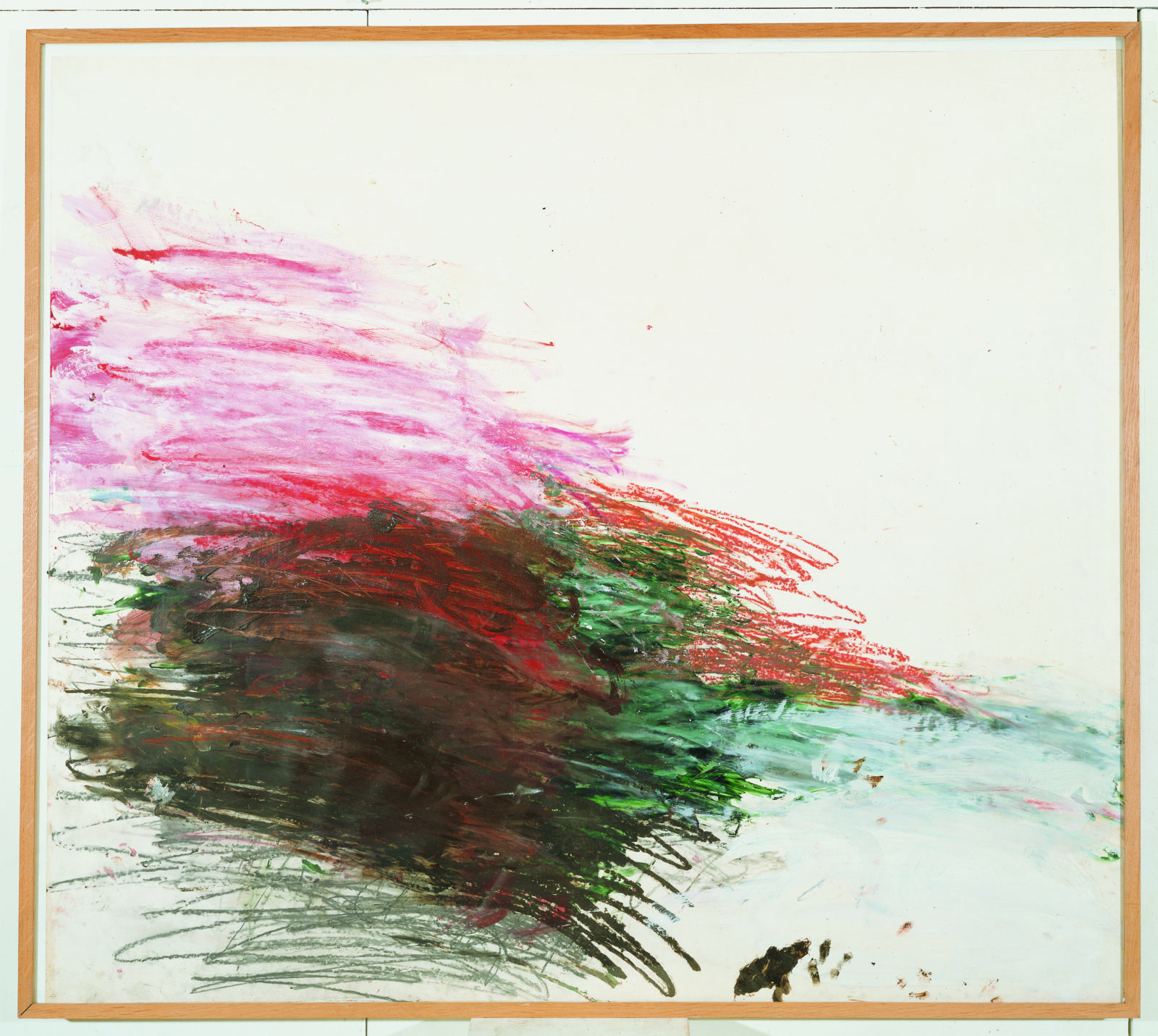
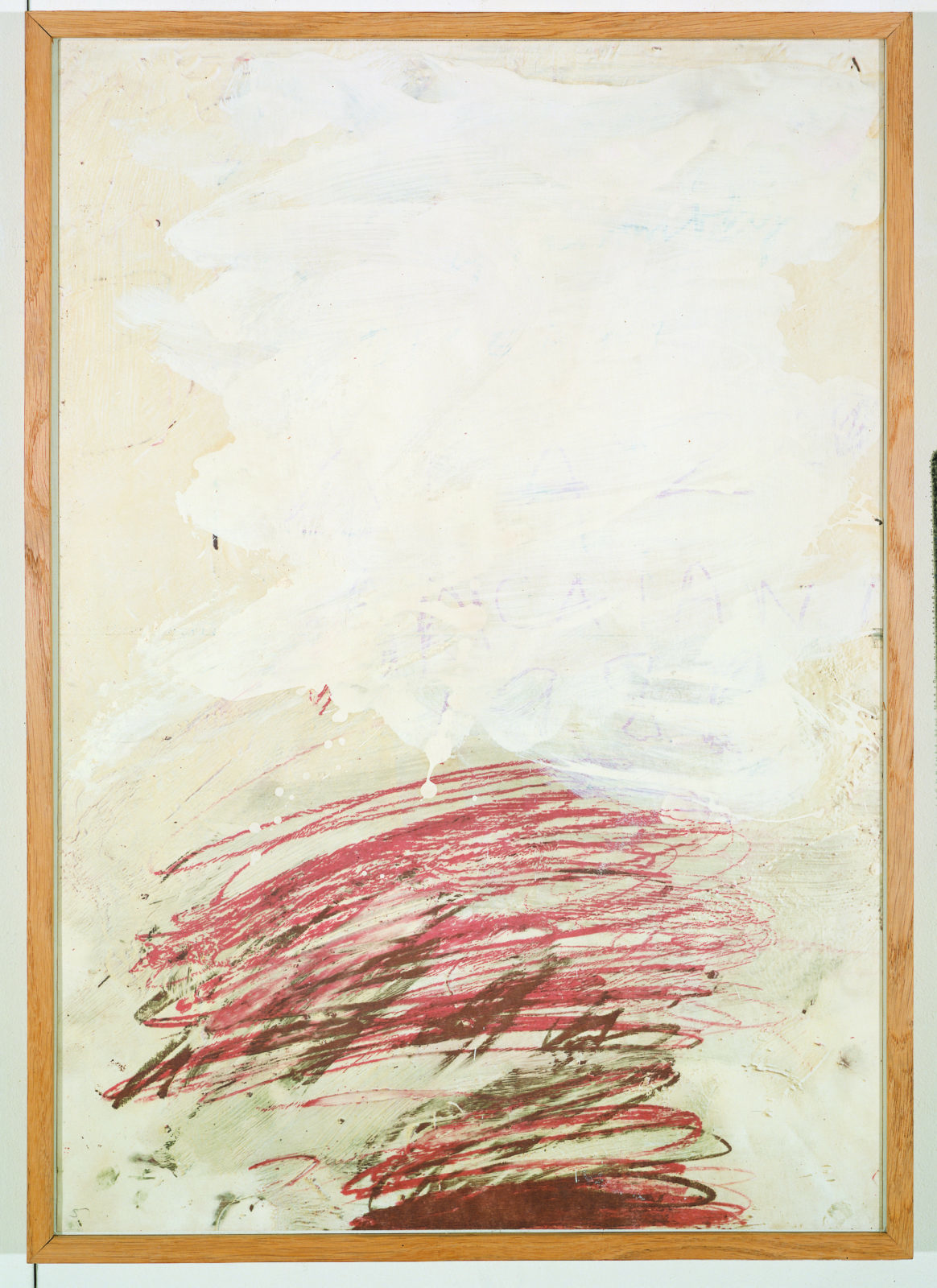

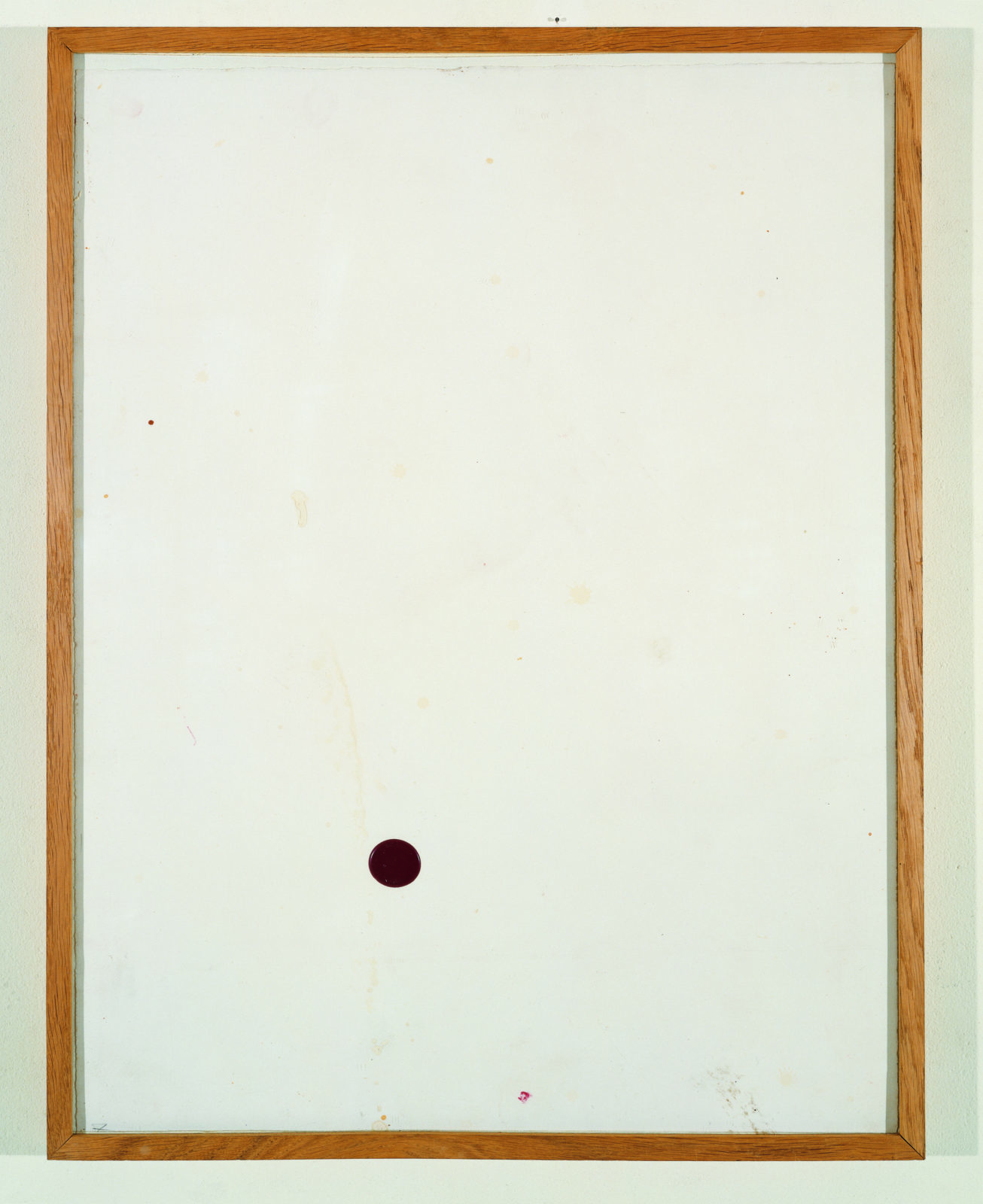
After studying at the famous Black Mountain College where he got to know Robert Rauschenberg with whom he maintains a very strong aesthetic and friendly relationship, and to which testify many photographs of workshops and trips which were shown in these rooms on the occasion of the Cy Twomnbly exhibition – Over time, Cy Twombly turns away from the practices of his peers, engaged in minimal and conceptual art, and embraces a most singular artistic journey.
If he too engages in an approach guided by the rejection of all virtuosity and all academicism, he nevertheless decides to retire to old Europe, to Italy, at the heart of the cradle of the Western world and of the History of classical art. He designed a work in which each line, each trace, each doodle, each touch of paint or each gesture, gracefully summons a collective memory from the myths of antiquity.
Through references to Pan, Achilles, Nikè, Aristée, Venus or the Delos league, the work of Cy Twombly seems to tell us the whole life of men of yesterday and today – their fears, their desires, their passions – and we want to embrace contemporary adventure ourselves through the symbolic power of the great myths.
Cy Twombly
Pan, 1980
© Donation Yvon Lambert à l’État français / Centre national des arts plastiques / Dépôt à la Collection Lambert, Avignon
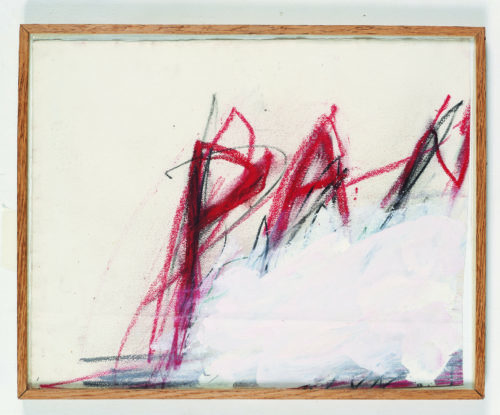
Anselm Kiefer
Yvon says:
“I knew Anselm’s work through the exhibitions that I never missed during my travels. One of the first times I saw him was in Berlin, at the opening of his very large exhibition at the National Gallery. He told me that he had locked himself in the museum for a month to prepare this retrospective, which marked me deeply. (…) Since my meeting with Anselm, I have assembled a small collection of works made of acquisitions and personal gifts. With its 5 meters long, Die Rheintöchter is the most imposing piece in my collection. Made of lead, with chalk and a photographic element, it represents everything I love about this artist. The works on paper all have a story for me that I share with Anselm such as the passion for the great myths of the origins, his discovery of the history of my country through the family tree of the Queens of France, his erudition for German opera, literature and the constitution of the French language which he now knows perfectly.”
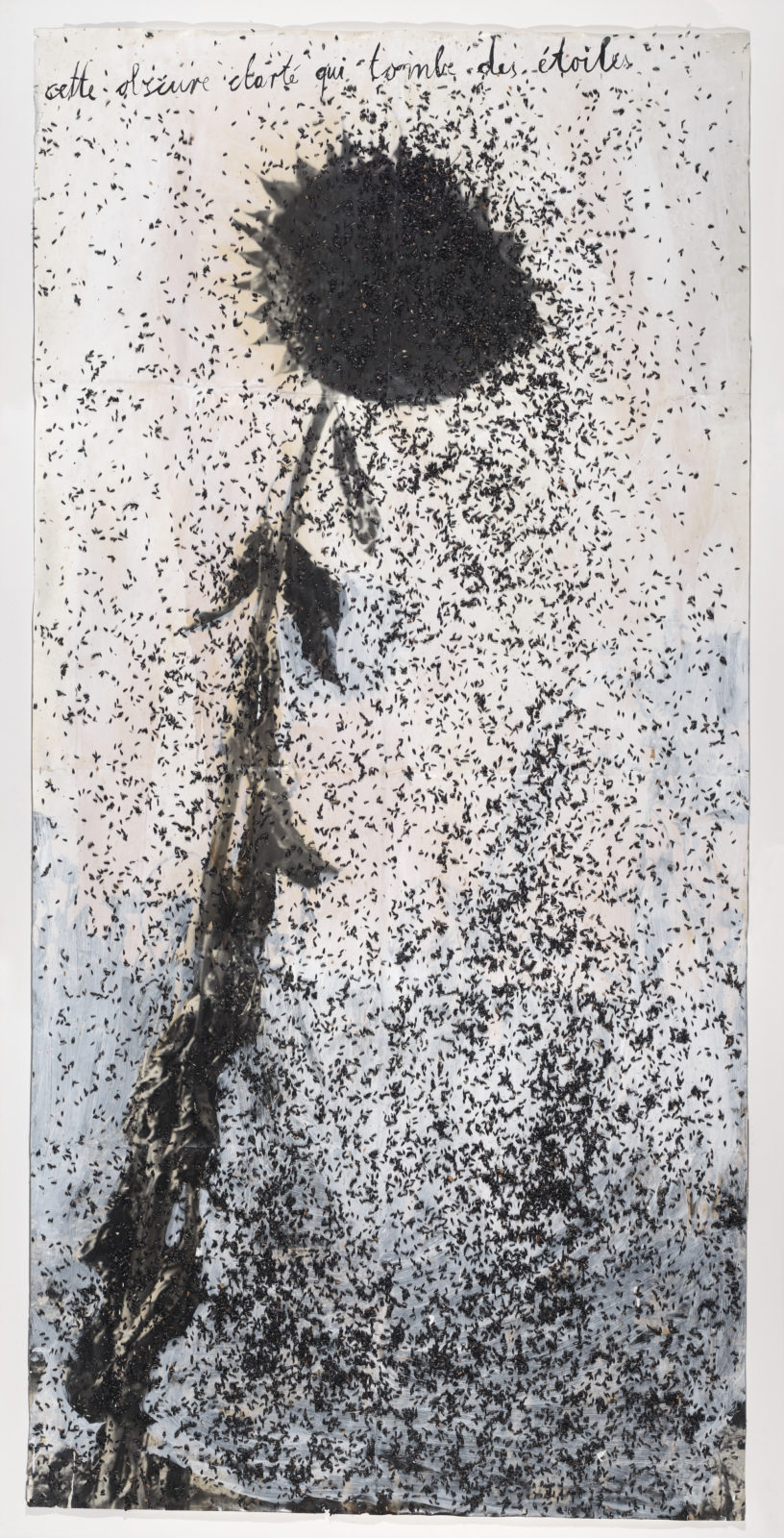
Anselm Kiefer, Cette obscure clarté qui tombe des étoiles, 1996
© Collection Privée / Dépôt à la Collection Lambert, Avignon
Born in Germany just two months before the Nazi capitulation, Anselm Kiefer began a work in the 1970s that he placed at the very heart of the open wounds of the history of the 20th century. Through monumental paintings and installations, drawings and photographs, he takes hold of the founding myths taken hostage by Nazi Germany to wash them of contempt, reveal their sensory force again and put them back at the center of our common history.
(…) I saw Anselm sowing thousands of sunflower seeds in the fields, photographing the flowers under the September sun, drying them in the workshop and then using them as raw materials, which are part of the work. In turn, sunflowers have become trees of life in the most recent self-portraits; by taking root directly in the belly of the artist, they also served for incredible cosmogonies where each black seed symbolizes the stars of a learned solar system.”
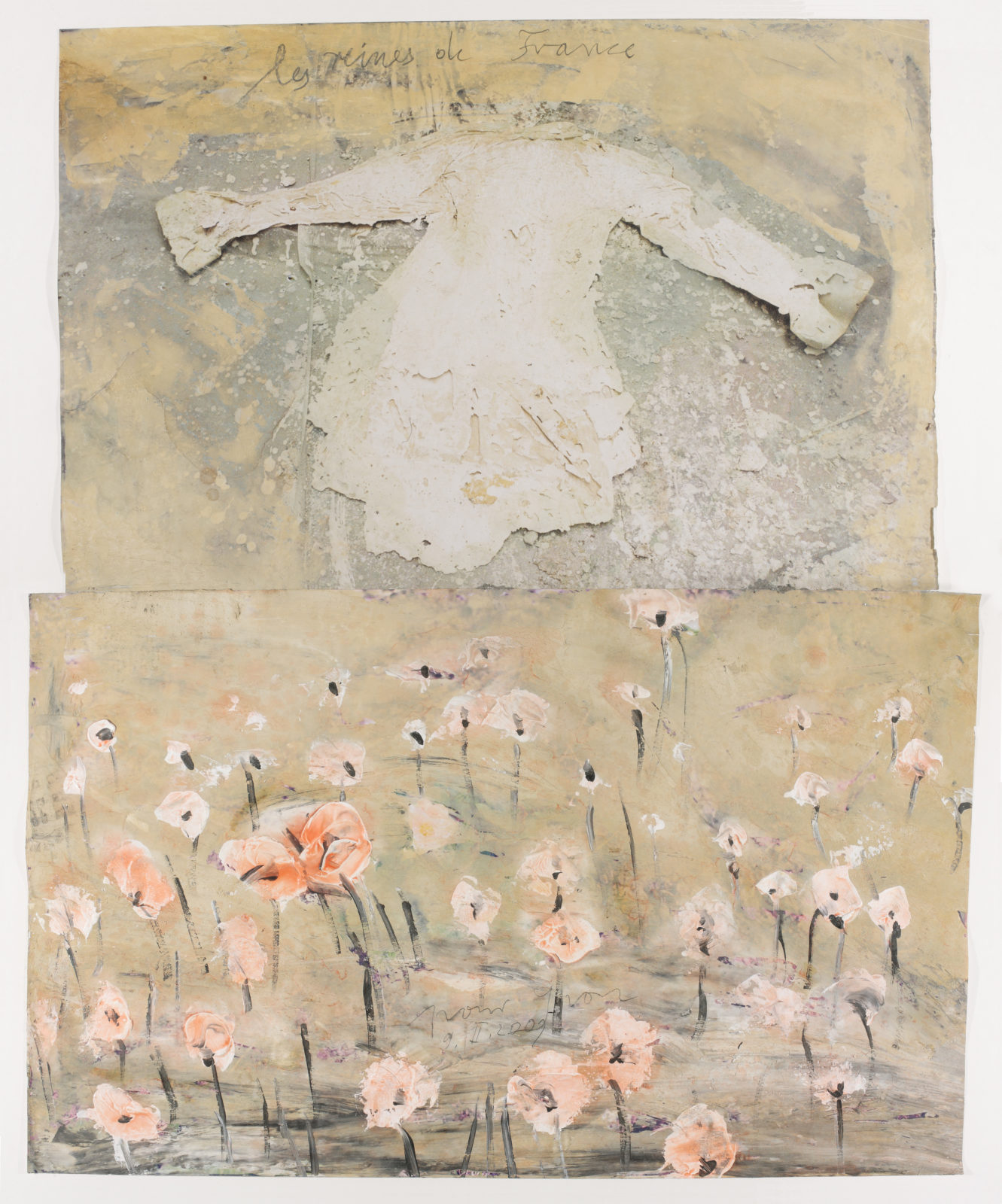
Anselm Kiefer, Les reines de France, 2001
Collection privée, Paris / Dépôt à la Collection Lambert, Avignon
© Anselm Kiefer
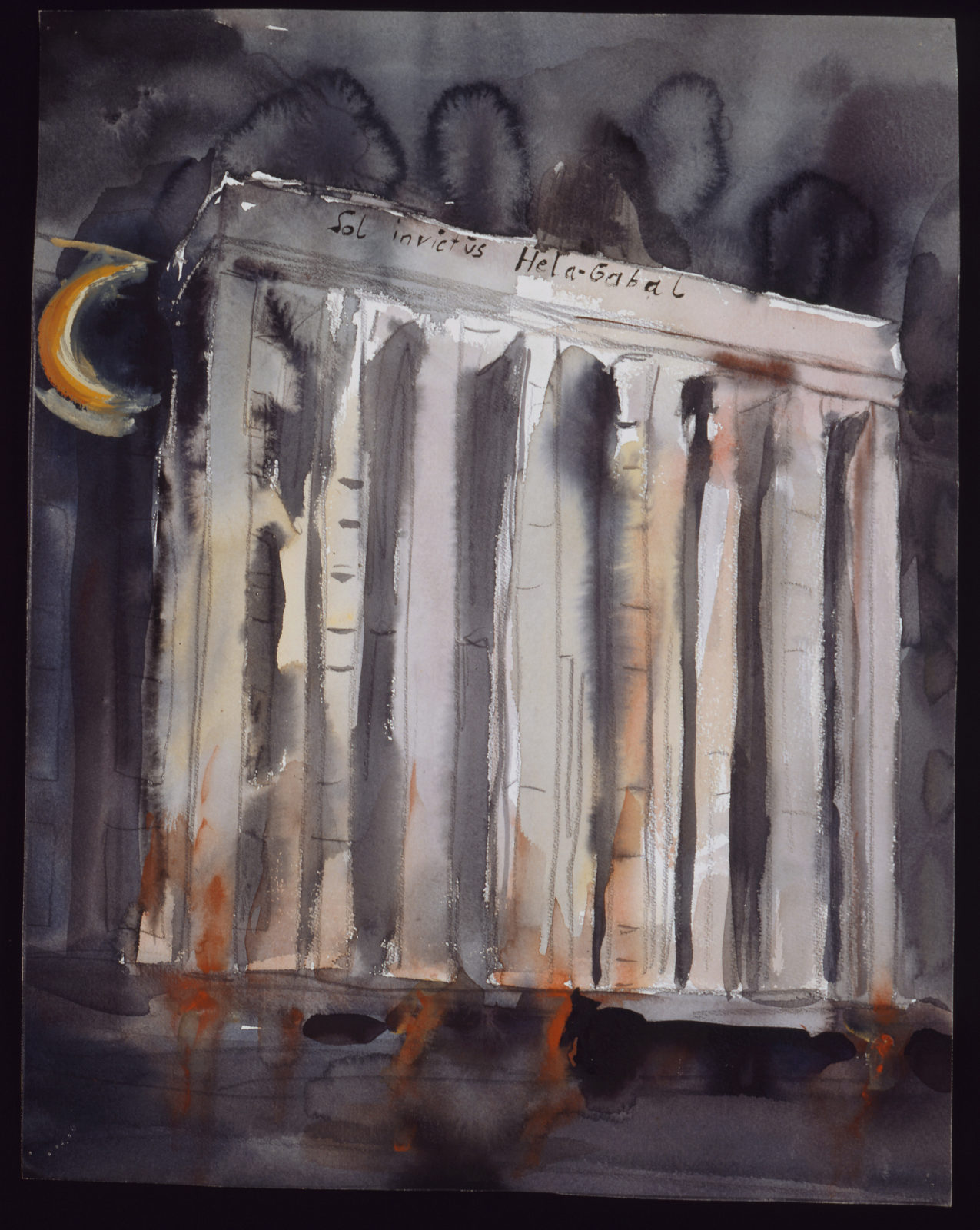
Anselm Kiefer, Sol Invictus Hela – Gabal, 1974
© Donation Yvon Lambert à l’État français / Centre national des arts plastiques / Dépôt à la Collection Lambert, Avignon
From Velimir Khlebnikov to Paul Ceylan, from Wagner to Corneille, Kant and Friedrich to the Queens of Frances, Anselm Kiefer delves into the legacy of the past in a heroic gesture whose strength and erudition are as admirable as disturbing. Violence fights against violence, destructive power against destruction, memory against forgetting.

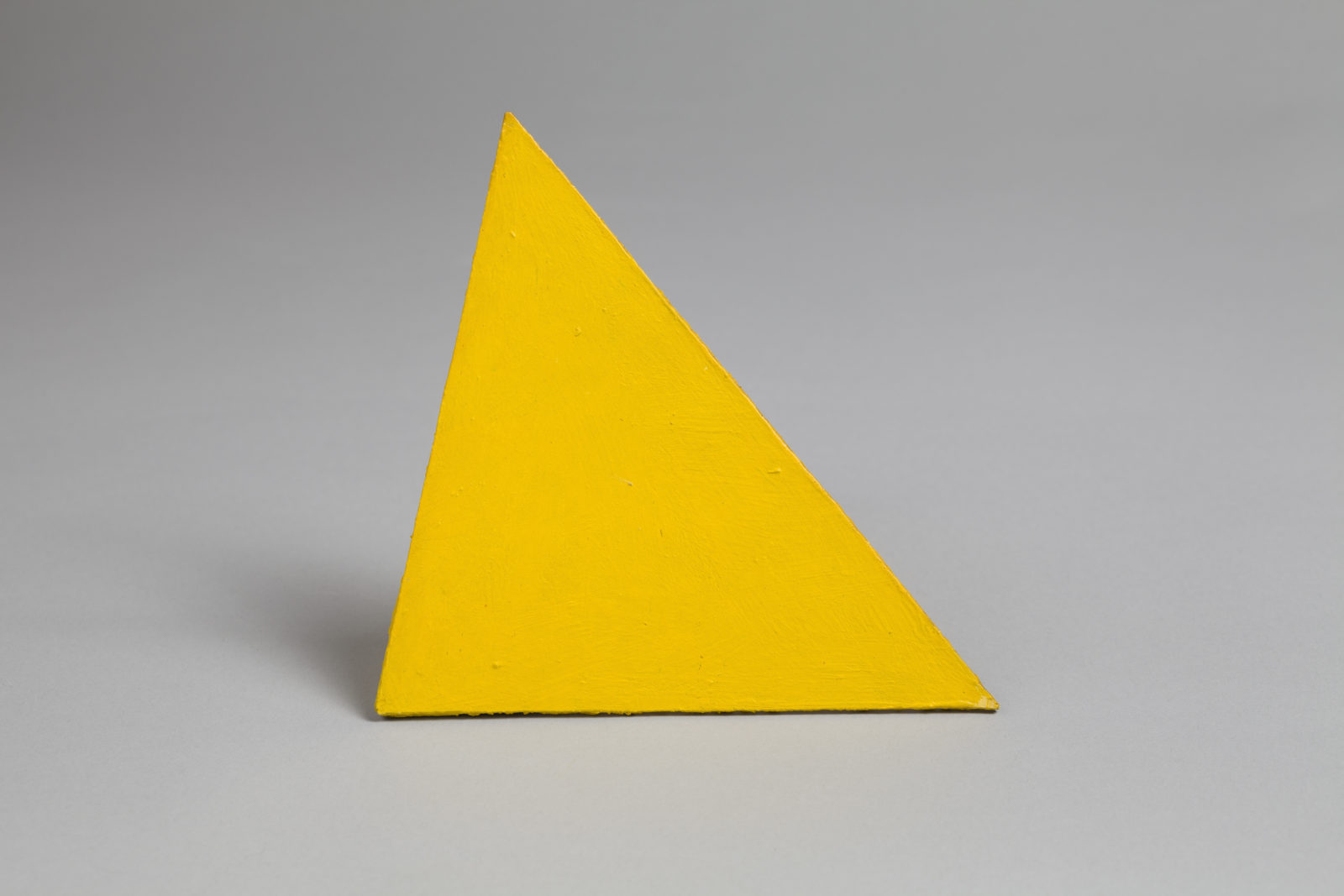
Richard Tuttle
Born in 1941 in Rahway (New Jersey, United States)
Lives and works in New York (New York, United States)
Yvon Lambert: “Very early on I wanted to exhibit Richard Tuttle. It was at the Betty Parsons gallery that I first saw this disconcerting work. […] It is always difficult for me to talk about him as my understanding of his work comes almost exclusively from tenderness. I have loved all of his work for thirty years and I cannot say anything more. Seeing on my walls these works made of “bits of string”, of a few lines of pencils mixed with traces of brushes, I know that all this rests on almost nothing, I don’t care. It’s almost nothing so subtle that moves me so much. I passionately love this work which I defend without forcing people. Time is always the best ally for this kind of work and it is the collectors who, sometimes with a little delay, always ask me to show them this work again. This artist, who I perhaps take for one of the greatest and most secret, knew perfectly how to detect this marvelous turn which took place in my life as a picture dealer around 1966.”

Close to Agnes Martin, whose taste for subtlety and delicate lines he shares, Richard Tuttle produces works that inhabit the exhibition spaces with a singular blend of discretion and assertion of their presence here and now. Each form, each line, each material, chosen for its apparent modesty, feeds a poetic system that thwarts traditional categories and invites us to reflect on the intimate relationship that we have with the works. Their fragility, the fleetingness of their appearance in the rooms of the museum, plunges us almost by surprise into a broader reflection on the existence of things and beings in the world.
Richard Tuttle, Maquette pour un monument à Dallas, 1974
© Donation Yvon Lambert à l’État français / Centre national des arts plastiques / Dépôt à la Collection Lambert, Avignon
Photo : Franck Couvreur
